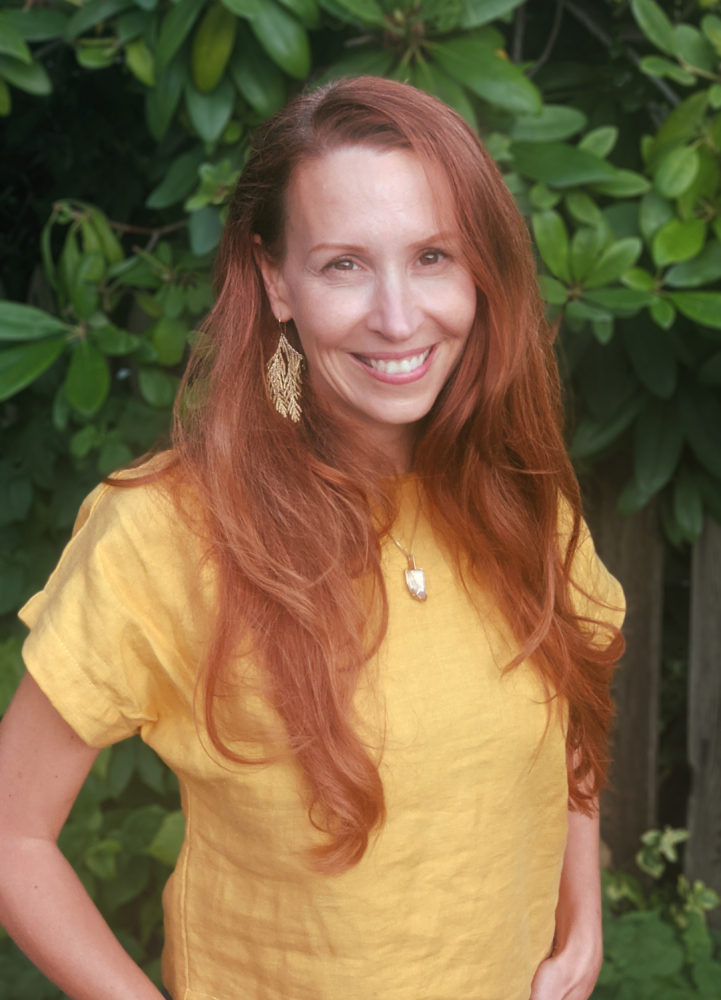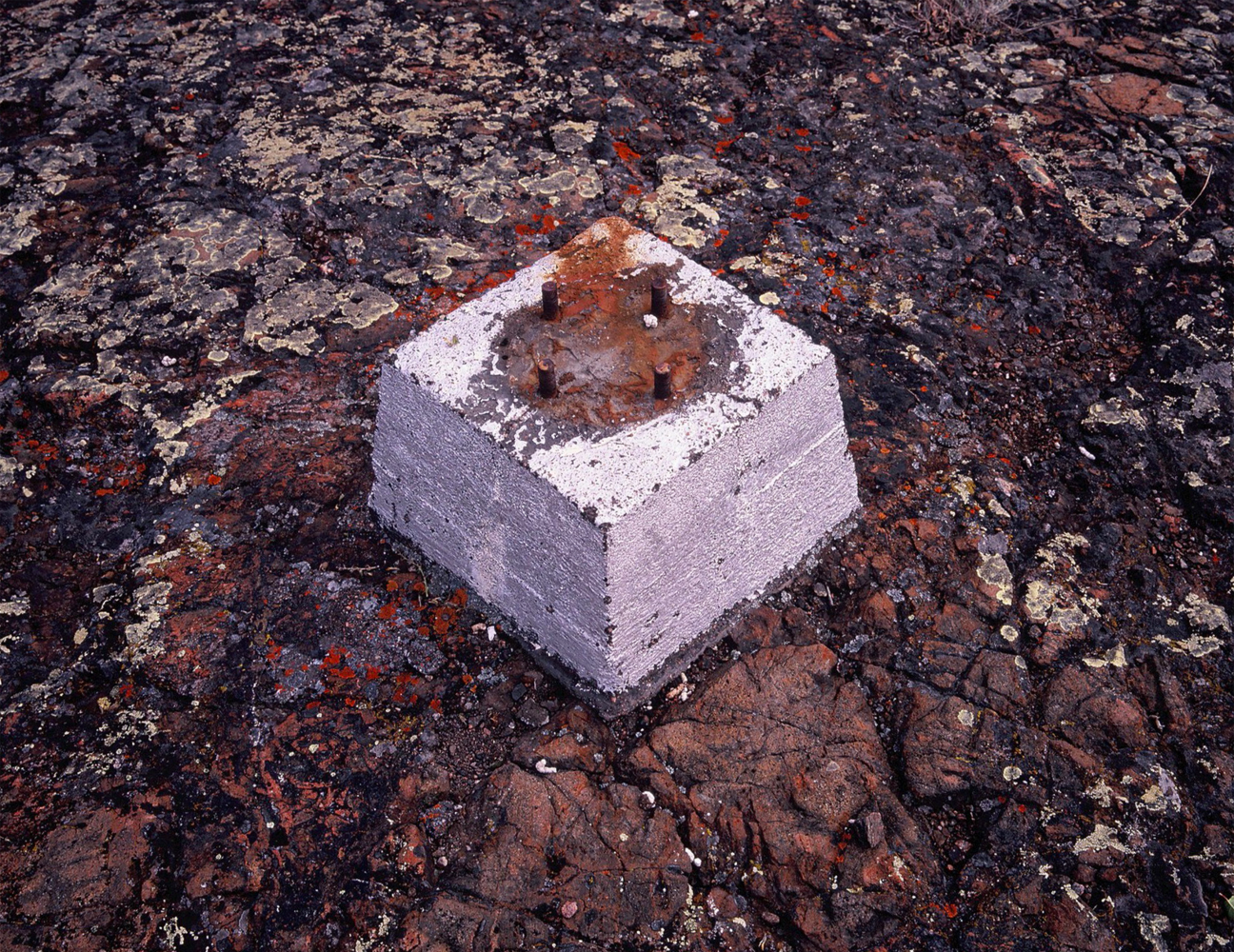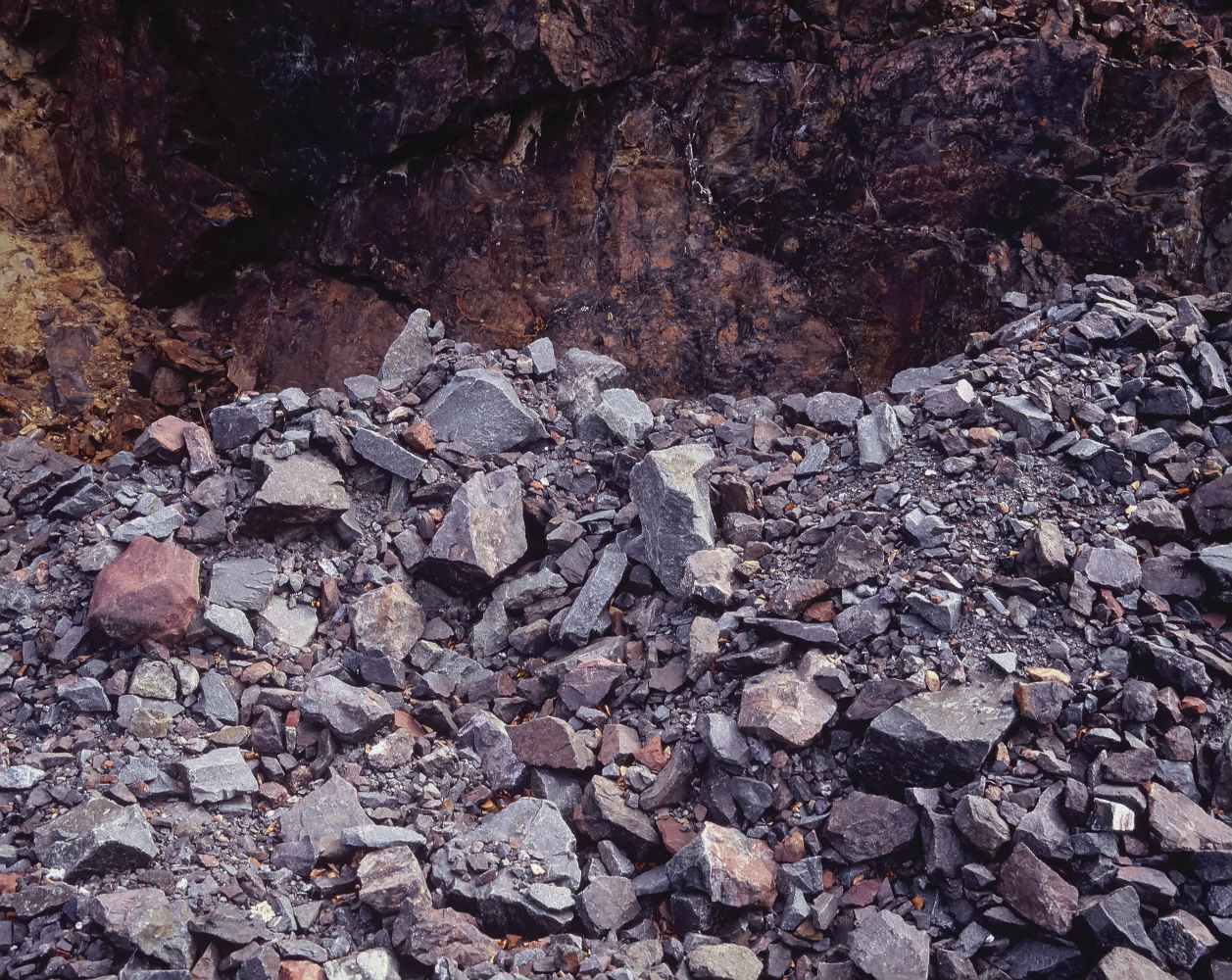Artists
Erin Siddall
Erin Siddall (born in Burnaby, Canada; lives in Vancouver, Canada) reveals invisible environmental risks, hidden stories, and traumatic events by probing representation of the unrepresentable. In her mainly photographic practice, she strives to shed light on shadowy areas and on the arbitrary divisions between what is deemed safe and what is considered dangerous. Her recent work examines nuclear energy production, its impacts over time, and its often unobservable effects.
- Born
- Burnaby, Canada
- Countries / Nations
- Canada
- Lives
- Vancouver, Canada
- Website
- erinsiddall.com

Works

Ts̱ēmā Igharas and Erin Siddall, Port Radium Mine Rock, 2019, silk prints. Commissioned by MOMENTA Biennale de l’image and the Toronto Biennial of Art. Courtesy of the artists © Erin Siddall

Ts̱ēmā Igharas and Erin Siddall, Port Radium Mine Rock, 2019, silk prints. Commissioned by MOMENTA Biennale de l’image and the Toronto Biennial of Art. Courtesy of the artists © Erin Siddall

Ts̱ēmā Igharas and Erin Siddall, A Money Rock, 2019, photograph. Commissioned by MOMENTA Biennale de l’image and the Toronto Biennial of Art. Courtesy of the artists
Of the Land
Great Bear Money Rock is part of a larger research project being conducted by Ts̱ēmā and Siddall on Port Radium, an abandoned mine near Great Bear Lake, in the Northwest Territories. The Dene community living on the lake’s shore is still feeling the effects of the radiation emitted by uranium extracted from the mine, which has been officially closed since 1982. In 2019, Ts̱ēmā and Siddall went to Délı̨nę, in the Sahtu Region—265 kilometres away from the mine—and gathered material, audio, and visual elements, laying the groundwork for the project. In two thematic parts, one at the Galerie de l’UQAM and the other at VOX, Great Bear Money Rock traces how the land and the life of local Indigenous communities overlap. At the Galerie de l’UQAM, the installation Great Bear Lake is the Boss is composed of a garden of crystals from the site of the mine, enclosed in glass bubbles to contain the weak radioactivity that they emit. Even though the glass is fragile, it plays a doubly protective role: it keeps us from contact with the ore, and it preserves the territory in its translucent showcase—territory threatened by human activity. Large-format prints placed on rock structures show the heaps of stones that cover the abandoned mine. Archived by Ts̱ēmā and Siddall during their crossing of Great Bear Lake, audio recordings inundate these rubbly landscapes. Retracing the narratives conserved in the waters of the lake and in the rocks strewn around the landscape, Great Bear Money Rock exhibitses the imperceptible, that which evades our senses but whose effects are nonetheless profoundly physical.
In collaboration with the Toronto Biennial of Art
Wet Futures
Great Bear Money Rock is part of a larger research project being conducted by Ts̱ēmā Igharas and Siddall on Port Radium, an abandoned mine near the Great Bear Lake, in the Northwest Territories. The Dene community living on the lake’s shore is still feeling the effects of the radiation emitted by uranium extracted from the mine, which has been officially closed since 1982. In 2019, Ts̱ēmā and Siddall went to Délı̨nę, in the Sahtu Region—265 kilometres away from the mine—and gathered materials, audio, and visual elements, laying the groundwork for the project. In two thematic parts, one at the Galerie de l’UQAM and the other at VOX, Great Bear Money Rock traces how the land and the life of local Indigenous communities overlap. At VOX, the installation The Lake is a Cup considers the memory properties of water. Shot by Ts̱ēmā and Siddall, views of the ghost mine, Délı̨nę, and the lake are splintered by projection through a water bottle balanced on a long, narrow prism. Like water, but also like bodies, the film accumulates radioactivity. The installation is permeated by the mechanical sounds made by the projector in an almost-organic cadence that constantly brings us back to our own bodies. Retracing the narratives conserved in the waters of the lake and in the rocks strewn around the landscape, Great Bear Money Rock exhibitses the imperceptible, that which evades our senses but whose effects are nonetheless profoundly physical.
In collaboration with the Toronto Biennial of Art